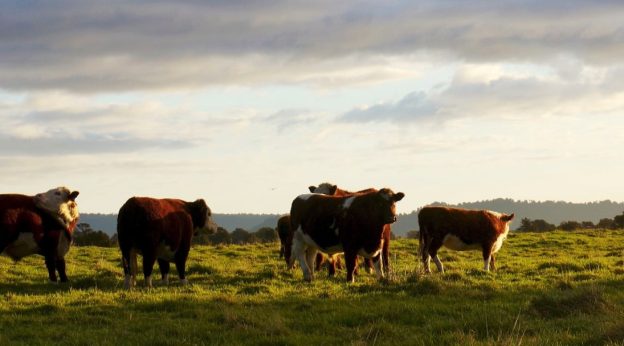Vets have advocated for the use of tests to monitor worm burdens in ruminants. This will make wormer application more efficient. However, the massive pharmaceutical companies have spoken out too. Due to this, many farmers have the impression that they need frequent worming for optimal growth rates.
Faecal worm egg count testing is more extensive in the sheep industry if you compare to the beef industry. It’s potentially because of a higher degree of concern around anthelmintic resistance in sheep. Yet, the worm problems we’re seeing with sheep farms should come as a huge warning to cattle farmers. Over-use of anthelmintics by treating to be safe has massive repercussions. Resistance within cattle populations has become a huge danger to profitability and productivity.
The issues we see with worms in cattle tend to be much more subtle than they are in sheep. They are harder to find too. Instead of profuse diarrhoea and drastic weight loss, in young cattle, you’re likely to witness a slow weight gain. The group will often stay “even” with no individual causing problems. As such, worm problems can go unnoticed easily and you may not know you need wormer.
Highest-risk animals
Saying all this, not every cattle group will be negatively influenced by worms. The highest-risk animals are ones lacking immune resistance. Examples include autumn-born calves during their initial grazing season and cattle with concurrent disease. There are also early weaned spring-born calves late in their initial grazing season. Then, there is cattle you’ve wormed heavily each grazing season.
Spring-born sucked calves aren’t as likely to ingest sufficient nematode larvae from the grass to develop a dangerous worm burden. This is during their initial summer outdoors. They are predominantly milk-fed for the initial 6 to 8 months of their life. Actually, you can usually skip the worming of these calves. The small quantity of worms they do ingest can aid them in developing a decent immunity ahead of weaning.
Immunity development
Healthy adult cattle normally develop a fantastic immunity to gastrointestinal nematodes. By the time an animal does its second grazing season, it should have the means to keep its worm burden under control. To clarify, spring-born calves should have the immunity at 24 months old. For autumn-born calves, it is 30 months. Therefore, you often don’t need to use wormer.
However, if the worm exposure has been artificially low due to anthelmintics, you can expect immunity to be underdeveloped. Due to this, age isn’t always the best indicator. Guidance states that anything over three years old shouldn’t need worming, unless something indicates otherwise.
Having said all this, you are probably asking how to tell when your animals need worming. You can use the idea of immunity and resistance to guess whether your cattle are carrying a high load of worms. We haven’t considered the rest of the worm population though, those being ones in the pasture. The pasture levels depend on all kinds of variables. Some of these are rotational time, stocking density, grass type and length, and temperature. The worm burden inside the gut comes as a result of a fine balance between the animal’s immunity and pasture factors.
Speak to us for details about wormer
At JS Hubbuck Ltd, we have multiple worming products available to buy. They will help to keep your animals in good condition. Even better, we can provide details about all of them, ensuring you get a professional service.
So, if you’d like to order wormer from us or have questions, please get in touch. We’re always happy to share our knowledge to help farmers get the best results.

